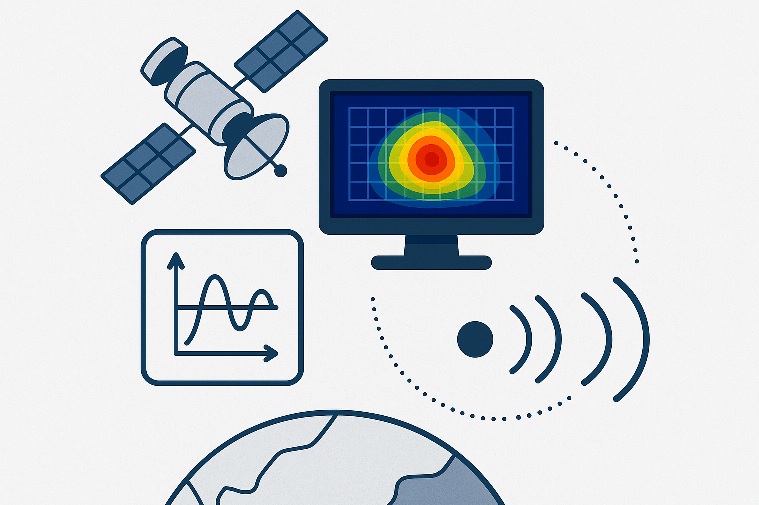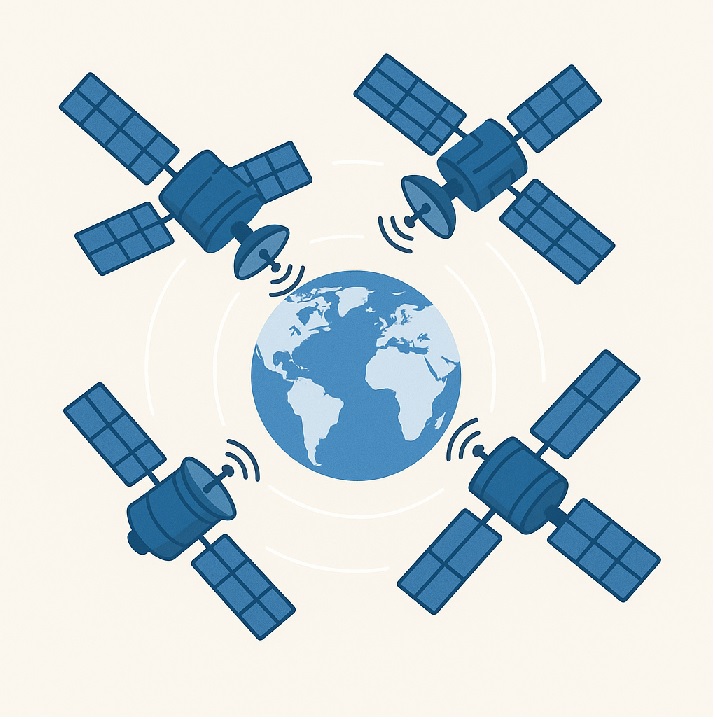The State of Satellites: How They are Changing Our World!
Look up at the night sky, and you might see a few stars twinkling — but hidden among them are thousands of satellites quietly at work. They connect people across oceans, guide airplanes through the clouds, help farmers grow crops, and warn us when storms are coming. We rarely think about them, yet they have become the invisible backbone of modern life. And right now, satellites are going through one of the biggest changes in their history — bringing exciting possibilities but also a few big challenges.
There are more satellites up there than ever before. Big companies are launching hundreds, sometimes thousands, to create “constellations” that can connect people all over the globe. The problem? They are starting to crowd the airwaves, a bit like rush-hour traffic in the sky. This can make it harder for signals — whether for internet, communication, or navigation — to get through clearly and reliably. Navigation satellites like GPS are part of this picture too. They are critical for cars, planes, ships — and even our phone’s map application — but they can be jammed or tricked by hackers. As more of our systems depend on precise location data, engineers are working to make these satellites tougher and more secure, so they can keep guiding us even when conditions aren’t perfect.

Most satellites communicate with each other and with Earth using radio waves. But now, some are using laser beams instead — think of it as super-fast internet in space. Lasers can send more data and are harder to block, but they have one big weakness: bad weather. Clouds, fog, and rain can mess up the signal, so many satellites are built to switch between radio and laser depending on conditions.
In the past, if a satellite’s job needed to change, you had to launch a brand new one. Now, we are seeing “smart satellites” that can reprogram themselves while in orbit. They can shift their coverage areas, change the kind of signal they send, or focus on a new region if something urgent happens — like a natural disaster or sudden demand for connectivity.
Satellites aren’t just busy sending signals back and forth — they are also like Earth’s watchful eyes in space. They capture detailed images, scan with radar, and measure heat patterns to see things we can’t, from the ground. This helps track changes in our climate, monitor forests and oceans, and even spot disasters like wildfires or floods before they get worse. By keeping a constant lookout, satellites give us early warnings and valuable insights that help protect people, property, and the planet.
We are sending more satellites into orbit than ever before. That means faster connections, better disaster warnings, and more accurate maps — but this also means addressing new challenges like avoiding signal jams, managing space traffic, and protecting against cyberattacks. As the Ansys blog on The State of Satellites points out, advanced simulations are helping solve these problems before they happen. By testing designs and scenarios on powerful computers, engineers can make sure our satellites are ready for whatever space — and Earth — throws at them.
Satellites may be far away, but their impact is close to home — in our phones, our cars, our businesses, and even the weather alerts we trust. The way they are evolving now will shape how we connect, navigate, and understand our planet in the years ahead. And while the technology is getting smarter, one thing is certain: the space above us is about to get a whole lot busier.

